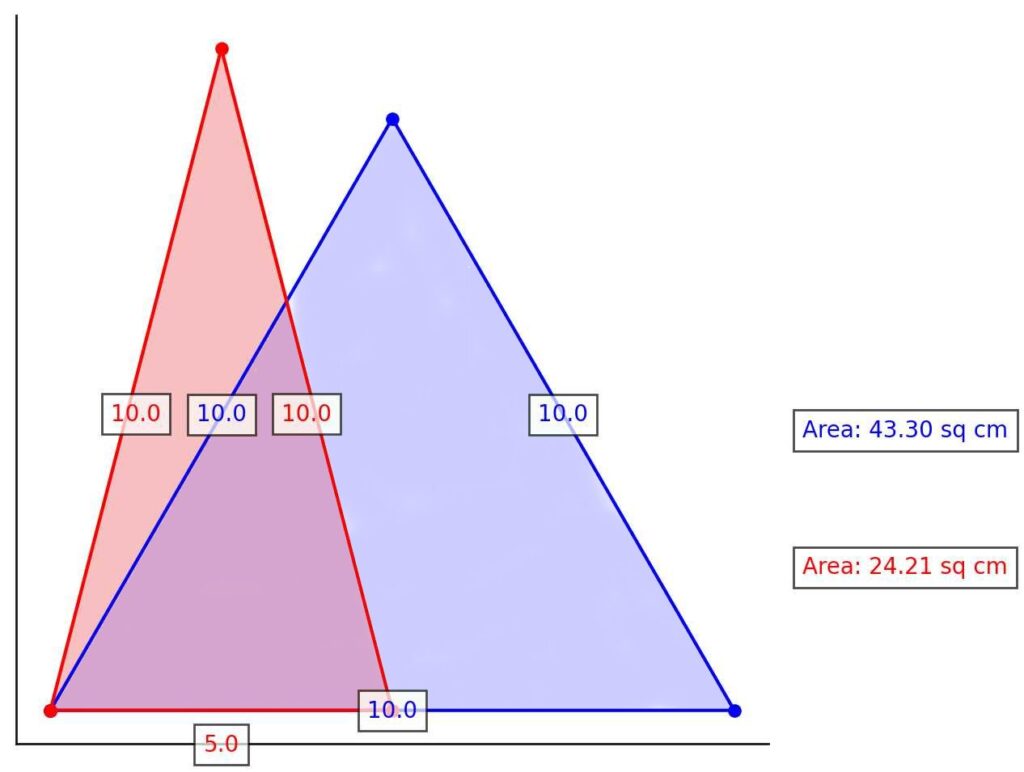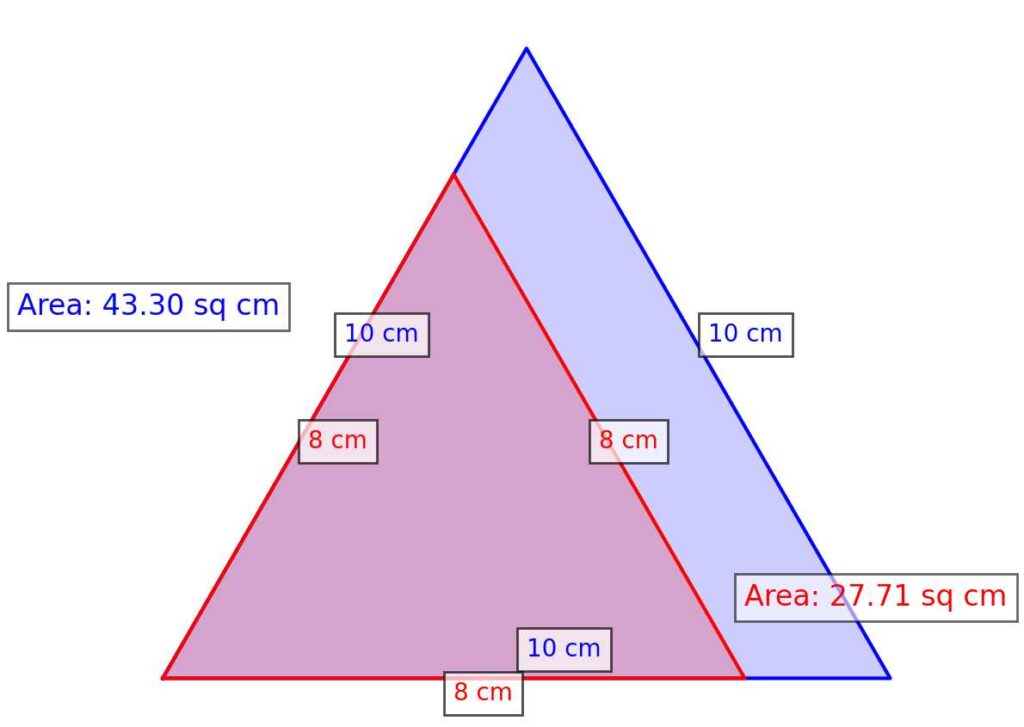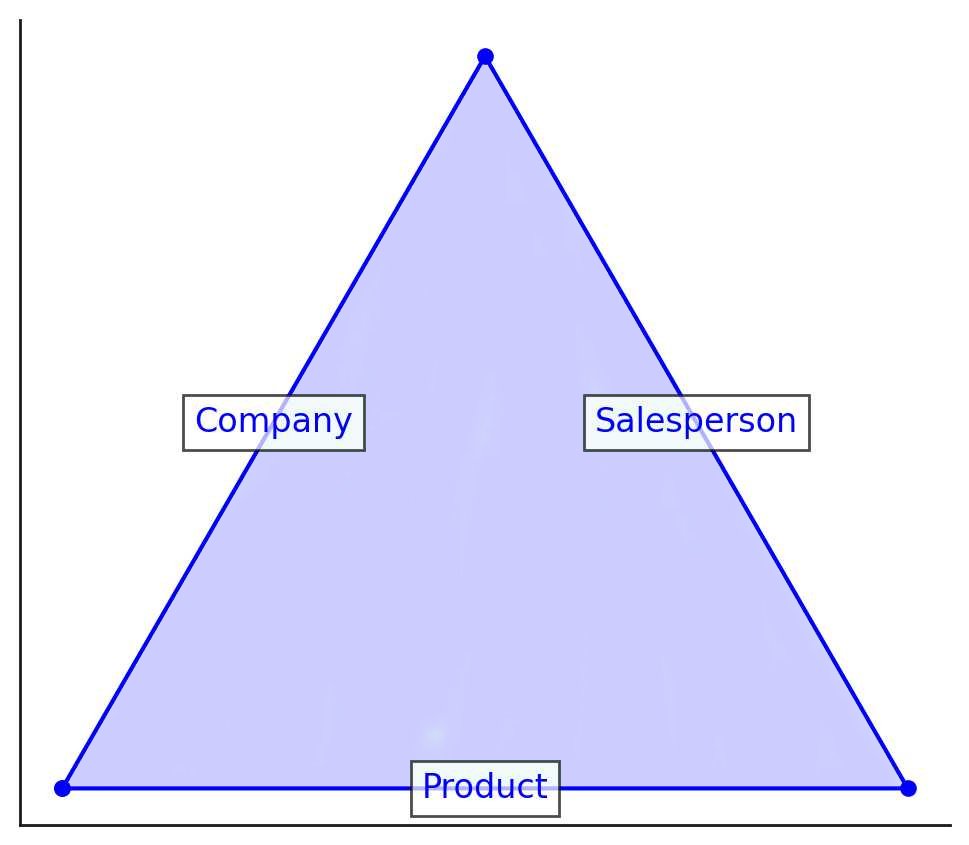As a business mentor, I often work with clients who left a company where they were top performers, believing they could run a business even better than their former employer. So, they struck out on their own, confident that their skills and reputation would set them up for success. But once they launched, they hit an unexpected roadblock; despite their expertise, they struggled to get prospects to buy. Sound familiar? The issue isn’t their ability or work ethic; it’s that they overlooked a crucial dynamic of sales known as the certainty scale.
As a business owner in the oil and gas investment space, I’ve had the privilege of educating investors in this asset class while also participating in several drilling programs myself. One particularly interesting aspect of the oil and gas industry is the frequency of sales pitches I receive from oil and gas exploration and production (E&P) companies. On any given week, I receive several cold calls from salespeople trying to convince me to invest in their drilling programs.
These pitches are often for high-ticket investments, with significant lead times before returns are realized, not to mention the high degree of failure inherent in oil and gas drilling ventures. Listening to these pitches has, over time, sharpened my ability to distinguish between those that resonate and those that fall flat. While my gut reaction often told me which pitch was better, I struggled to articulate the reasons why. That changed when I read Jordan Belfort’s The Way of the Wolf and was introduced to the “certainty scale.”
In his book, Belfort says that all sales are the same in that the prospect needs to feel relatively certain that if they buy, there is a good chance of success. You can think about certainty as a continuum from zero to ten. On one end of the certainty continuum is “not certain at all,” zero, and on the other, completely certain, ten. He added that the certainty continuum has three dimensions. They have to feel certain that:
- The solution you are offering will solve the problem.
- They can trust you as the salesperson.
- Your company is reputable and can deliver the solution.
As a dyslexic who sees things spatially, the three dimensions of Belfort’s certainty scale formed the concept of a triangle in my mind. This triangle became a light bulb moment that illuminated the concept for me. Each side of the triangle represented a key dimension of persuasion: certainty in the product or service solving the problem, trust in the salesperson as an expert and reliable guide, and belief in the company’s ability to deliver on its promises. The area of the triangle symbolizes the total certainty the prospect feels, and to close the sale, the value needs to meet or exceed the prospect’s “action threshold.” The action threshold is the point at which a prospect feels certain enough to take action and commit to the purchase.

For example, an equilateral triangle with sides of 10 centimeters would have an area of 43.3 square centimeters. Let’s say that the prospect’s action threshold is 25 square centimeters. When all three sides of the triangle represent complete certainty as denoted by all 10s, the area we computed was 43.3 square centimeters, which far exceeds the required action threshold for our fictitious prospect at 25 square centimeters.

However, if just one side—the company, for example—was weaker, reduced to 5 while the other two sides remained at 10, the triangle’s area would shrink drastically to just 24.21 square centimeters, below the action threshold of 25. This highlights how a disproportionate weakness in one area significantly reduces total certainty, even if the other two dimensions remain strong.

On the other hand, if all three sides were slightly shorter but balanced at 8 centimeters each, the area would be 27.71 square centimeters, still above the action threshold. Interestingly, reducing each side by 2 centimeters (a total of 6 off a perfect score) still maintains enough certainty to close the sale. But when just one side is reduced by 5 centimeters—less than the 6 centimeters total reduction in the balanced scenario—the area is cut in half. This shows how critical it is to strive for balance and avoid disproportionate weaknesses in any one area. A single weak side destabilizes the triangle and prevents it from reaching the necessary area to support the prospect’s buying decision.
In my mind, the action threshold is like a target area the triangle must achieve. The stronger and more balanced the sides are, the larger the area becomes, and the closer the prospect is to feeling certain enough to take action. This visualization taught me that success in sales doesn’t come from perfection in one or two areas, but from ensuring that all three dimensions are consistently strong.
Often, when someone leaves an established company to start their own business, their new company lacks a track record. Their previous employer had a recognized brand and customer reviews that prospects could rely on to feel a level of certainty in the company. Even if the new business offers the same service—possibly with a better value proposition—and the owner has built trust with the prospect, the missing piece is often the company’s credibility. This uncertainty is a major reason why many startups struggle. The key takeaway? To succeed, you must strengthen all three sides of the certainty triangle. Let’s review what it takes to keep each side strong.
Building Certainty in Your Solution
One of the sides that makes up the certainty triangle is the prospect’s level of certainty as to the ability of your product or service to solve their problem. If this side of the triangle is weak, it doesn’t matter how strong the other two sides are. Trust in you as the salesperson and in your company’s ability to deliver won’t matter if the prospect doubts the product itself. So, how do we strengthen this side of the triangle and expand the area to reach the action threshold?
Identifying the Pain Points
It all starts with the problem. People buy solutions, not products or services. Your first job is to uncover what’s bothering your prospect and paint a clear picture of the pain they’re experiencing. For example, a small business owner drowning in bookkeeping errors or a commuter constantly repairing an unreliable car is already primed to seek relief. This is where you position your product or service as the solution: the intuitive accounting software that turns chaos into clarity or the dependable vehicle that turns frustration into freedom.
Here’s the key: the more specific you can get with the pain points, the sharper your positioning becomes. If you can show the prospect you understand their struggle better than anyone else, you’ve started extending that critical side of the solution triangle.
Showing How It Will Change Their Life
Once the pain is clear, it’s time to show the payoff. What does life look like after they use your product or service? This is where benefit-focused language comes in.
Instead of just saying, “This software will reduce errors,” say, “This will save you countless hours every week and allow you to focus on growing your business.” Instead of, “This car is reliable,” say, “Just imagine the peace of mind of never again having to worry about breaking down on your way to work.”
The key is to make them picture their future selves living a better, easier life—because of your offering. This is how you keep growing the product side of the triangle.
Providing Evidence and Sharing Stories
Let’s face it: anyone can claim their product or service will solve a problem. What sets you apart is the evidence you provide. Think social proof such as testimonials, case studies, and cold, hard data as the “Miracle-Gro” you add to the triangle’s side to increase the prospect’s certainty.
For instance, if you’re selling an app, show real user reviews about how it saved time and reduced stress. Share reliability stats or highlight warranty coverage if you’re selling a car. Better yet, tell relatable stories: “One of my clients was in the same situation as you, constantly stuck in traffic with their old car breaking down. They switched to this crossover SUV and told me it’s the best decision they’ve ever made.”
Stories build emotional connections, while data builds logical confidence. Together, they can grow the product or service side of the triangle faster than either could alone.
Creating Urgency/Scarcity
Even if the prospect believes in your product, they might hesitate. That’s where urgency and scarcity come in. Limited availability, time-sensitive discounts, or exclusive deals help motivate action.
For example, “This rebate ends Friday: act now to save $2,000” or “We only have a few open slots left for this tax season.” Urgency isn’t about pushing; it’s about reminding them that their pain will persist if they delay.
Factors That Affect a Solution’s Certainty
Let’s be real: price is always part of the equation. High-ticket items—like luxury cars or premium consulting services—demand more proof to justify the cost. For these, you need to work harder, such as providing detailed ROI breakdowns, warranties, or guarantees. Lower-priced offerings face less resistance but still require reassurance about quality or value. For these, customer reviews or short demos often suffice.
The more complex or innovative your product or service is, the greater the perceived risk. A reusable water bottle is low-risk and easy to understand. But a cutting-edge AI-driven marketing platform? That’s another story. Here, you’ll need product demos, free trials, and guarantees to help the prospect feel confident enough with your solution to move forward.
Finally, if your product or service is new, it may attract attention, but it may also arouse skepticism. A revolutionary new electric vehicle or AI tool might excite your prospect but requires extra validation through success stories, real-world applications, or FAQs.
To strengthen the product side of the triangle, your focus should always be on understanding the pain, showing the transformation, backing it up with proof, and creating urgency. Remember, the action threshold isn’t just about the product or service being “good enough”; it’s about building enough certainty to make it irresistible. And when you strengthen this side of the triangle, you’re one step closer to closing the deal.
Building Certainty in the Salesperson
The second side of the triangle is the prospect’s certainty in you as the salesperson. Even with a great product and a strong company backing it, the sale won’t happen if the prospect doesn’t trust you. The goal is to build their certainty in you as a capable guide so that they feel comfortable relying on your judgment and allow you to take control of the sales process while reassuring them that they’re in good hands.
So, how do we strengthen this side of the triangle and expand the area to reach the action threshold?
Sharpness: Demonstrating Mental Acuity
Being sharp means presenting yourself as intelligent, quick-thinking, and fully engaged. A sharp salesperson listens carefully, responds thoughtfully, and tailors their communication to the prospect’s specific needs.
For example, if a prospect mentions a competitor, acknowledge it and highlight why your solution is better: “That’s a great point. Compared to their offering, we provide X benefit, which I believe aligns more closely with your goals.” These kinds of tailored, insightful responses demonstrate that you’re not only knowledgeable but also attuned to their concerns. This sharpness builds trust, encouraging the prospect to see you as someone they can rely on to guide them.
Enthusiasm: Showing Genuine Passion
Enthusiasm is contagious and demonstrates that you genuinely care about solving the prospect’s problem. Your tone, energy, and body language should reflect excitement and belief in what you’re offering.
For example, when introducing your solution, don’t just share facts, share your passion: “I’m really excited about this because I’ve seen how transformative it can be for businesses like yours.” Enthusiasm reassures the prospect that you’re invested in their success, which makes it easier for them to trust your judgment and follow your lead.
Empathy: Understanding Their Needs
Empathy begins with active listening and a genuine understanding of their challenges. When you acknowledge their pain points, you demonstrate that you prioritize their needs over your pitch.
For instance, if a business owner expresses frustration with inefficient systems, respond with, “I completely understand how that could make running your business more stressful. Let’s explore how we can simplify things for you.” Empathy creates a connection, which allows the prospect to feel understood and more willing to defer to your expertise as a trusted guide.
Authority: Positioning Yourself as an Expert
Authority establishes trust by proving that you know what you’re doing. Share relevant credentials, industry knowledge, or success stories demonstrating your expertise.
For example, you might say: “I’ve worked with several clients in your industry who faced similar challenges, and we were able to streamline their operations by 40%. I’m confident we can achieve similar results for you.” By positioning yourself as an authority, you help the prospect feel comfortable relinquishing control of the decision-making process because they trust your expertise.
Consistency: Following Through on Promises
Trust isn’t built on words alone; it’s earned through action. If you promise to send a follow-up email or deliver a proposal by a certain time, follow through without fail.
For example, if you say, “I’ll send you a detailed proposal by Friday at noon,” ensure it arrives on Friday as promised. You reinforce their certainty that you are the real deal whenever you deliver on your word. This reliability reassures them that they’re working with someone who will guide them competently through the process.
Factors That Affect a Prospect’s Certainty in You
You position yourself as the ideal guide when you combine sharpness, enthusiasm, empathy, authority, and consistency. And here’s the key: once the prospect feels certain in your ability to lead, they’ll be more willing to let you take control of the sales process.
Think of it this way: if the prospect trusts that you understand their needs, are passionate about helping them, and have the expertise to deliver results, they’ll feel safe deferring to your judgment. This allows you to steer the conversation, overcome objections, and confidently guide them toward the best decision.
However, to truly control the sales process, you need to balance empathy, enthusiasm, and authority. Too much empathy without authority might make you seem unqualified, while authority without empathy or enthusiasm could make you seem pushy or disconnected.
When these elements are in balance, you not only strengthen the salesperson’s side of the triangle but also ensure the prospect feels secure enough to follow your lead.
Building the prospect’s certainty in you as a salesperson is not just about trust; it’s about positioning yourself as the guide they can rely on. When they believe in your sharpness, passion, empathy, and expertise, they’ll feel comfortable deferring to your judgment. This is how you take control of the sales process and move one step closer to reaching the action threshold.
Building Certainty in the Company
The third side of the triangle represents the prospect’s certainty in your company to deliver. Even if the product is excellent and the salesperson is trustworthy, the triangle won’t grow large enough to reach the action threshold if the prospect doubts the organization behind it. As I shared earlier, this is why many new businesses fail to gain traction. So, how do we strengthen this side of the triangle and expand the area to reach the action threshold?
Leverage Testimonials and Case Studies
Think of testimonials and success stories as the building blocks that expand the company side of the triangle. Real examples of satisfied customers show that your organization delivers consistent results.
For instance, if your company offers marketing services, share a case study about a client whose sales increased by 50% after implementing your strategies. Or, if you’re in tech, showcase a client who cut their operational costs by 30% using your software. These stories help prospects visualize your company’s ability to solve problems like theirs.
Demonstrate Longevity and Stability
A company with a strong history is easier to trust. If your organization has years of experience, highlight that longevity and share milestones that demonstrate stability. For example: “We’ve been helping businesses like yours for over a decade, with more than 5,000 successful projects completed.”
If you’re a newer company, focus on the strength of your team, innovative solutions, and your vision for growth. For example: “While we’re a newer company, our leadership team has over 20 years of combined experience, and we’re dedicated to setting a new standard in this industry.” Transparency about your goals and strategies can reassure prospects that your company is solid and capable, adding weight to this side of the triangle.
Showcase Accreditations and Partnerships
Accreditations, certifications, and partnerships strengthen the prospect’s certainty that your company can deliver. A tech company certified by a recognized standards organization or a service provider partnered with a leading brand instantly builds credibility.
For example, if your company is ISO-certified, mention how it ensures quality and reliability. Or, if you’ve partnered with a respected industry leader, emphasize how that partnership validates your expertise and capabilities. These affiliations show that your company meets high standards, giving the prospect tangible reasons to trust you.
Word of Mouth and Reputation
Word of mouth is one of the most powerful tools for growing the company side of the triangle. Positive reviews, customer referrals, and endorsements from reputable sources act as proof points that your organization delivers on its promises.
Encourage satisfied customers to share their experiences through testimonials, online reviews, or referrals. For example, a glowing review on a trusted platform such as Google or Yelp or a recommendation from an industry influencer can significantly bolster a prospect’s certainty in your company. The more third-party validation you can provide, the more secure this side of the triangle becomes.
Transparency and Support
Transparency is the cornerstone of trust. Prospects want to know that your company operates with integrity and will stand by its commitments.
Be clear about your processes, policies, and customer support. For example, offering detailed service agreements, clear guarantees, or accessible support channels shows accountability. Statements such as “We offer a 100% satisfaction guarantee” or “Our customer support team is available 24/7 to help with any questions” provide reassurance that your company will be there for them every step of the way.
Whether through testimonials, accreditations, a strong reputation, or transparency, the goal is to make the company side of the triangle as strong as possible. When prospects believe in your company’s ability to deliver, they’ll feel confident that the organization supporting the product and salesperson is just as reliable.
Conclusion: Strengthening the Triangle to Close the Sale
In the high-stakes world of oil and gas investments—or any industry where trust and certainty are paramount—success hinges on your ability to strengthen all three sides of the triangle: certainty in the product, certainty in the salesperson’s ability as a guide, and certainty in the company’s ability to deliver. If even one side is disproportionately weak, the total confidence won’t surpass the action threshold, and the prospect won’t move forward.
The key takeaway is balance. A stellar product won’t close the deal if the prospect doesn’t trust you as a guide. Likewise, even the most trustworthy salesperson can’t sell for a company that seems incapable of delivering on its promises. But when all three sides of the triangle are strong and balanced, the total certainty grows, tipping the scales and guiding the prospect to a “yes.”
This framework has reshaped the way I approach not only the evaluation of pitches but also their crafting. By visualizing the triangle and focusing on building certainty in each dimension, you can create a compelling, trust-driven sales process that consistently meets and exceeds the prospect’s action threshold. Whether you’re presenting a high-ticket investment opportunity or a more modest offering, the principles remain the same: strengthen every side of the triangle, and you’ll build a foundation strong enough to close the deal.
How are you creating certainty in your prospect in your solution, as their guide, and that your company will deliver?












